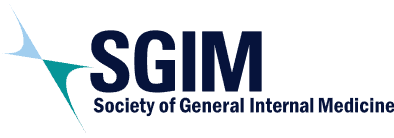Why does SGIM need to find a way to leverage and build a unified primary care coalition?
Unless we find a way to speak with one, louder voice, backed up by patient stories, we are destined to lance at windmills seeking smaller, incremental wins at the margins, while our hospitals and procedural colleagues drive the medical industrial complex away from a higher-value, primary care based health system. As explained in a recent perspective article, the fee-for-service payment system is incompatible with person-centered primary care.1 The article cites the astounding fact that less than 5% of all Medicare spending in 2015 went for primary care services, even when defined broadly.
What is SGIM doing to help build a strong primary care coalition?
As indicated in the January Q & A column in the Forum,2 SGIM has been nurturing its relationships with other primary care organizations by becoming an executive member of the Primary Care Collaborative and by reaching out to leaders of other professional societies. Through such efforts, SGIM had the opportunity to participate in a coalition formed specifically to address the need for a new paradigm for primary care financing. The coalition was convened by the Larry A. Green Center, and includes the American College of Physicians, American Academy of Family Physicians, American Academy of Pediatrics, American Board of Internal Medicine, American Board of Family Medicine, American Board of Pediatrics, and SGIM. The executive directors of the seven organizations have been meeting regularly since August, and recently came to consensus on a unified statement calling for “investment in health as the new paradigm for financing primary care as a public good.”3
What are the shared principles of primary care that guided development of the statement on a new paradigm for primary care financing?
The coalition based its approach on the shared principles of primary care that were developed in 2017 with input from more than 350 stakeholders representing diverse aspects of the healthcare system.3,4 The principles affirm the importance of primary care that is: 1) person and family centered; 2) continuous; 3) comprehensive and equitable; 4) team-based and collaborative; 5) coordinated and integrated; 6) accessible; and 7) high-value.
What are the main features of the proposed new paradigm for financing primary care as a public good?
The new Invest in Health paradigm would “invest in primary care functions that promote optimal health for all members of society. With that investment, primary care physicians and their teams would be enabled to coordinate care locally, collaborate with community organizations and public health departments, and address known social drivers of health.”3 In the new paradigm, payment would be connected to preventive care and upstream social drivers of health, not just the downstream consequences of acute and chronic conditions. Payment would also be relationship-centered to support connections between patients, physicians, other members of the clinical care team, and the community. The paradigm also envisions primary care as a pathway to better health at the population level with primary care leveraging community-based resources in response to local needs. For more details about the proposed paradigm, see the full statement that includes a table comparing the Invest in Health paradigm with the current cost-based paradigm.3
Who are we calling to action?
The coalition calls on the federal government to work collaboratively with primary care organizations to: 1) apply a streamlined learning process for implementing new models of primary care financing that reflect the new Invest in Health paradigm; 2) eliminate regulatory structures and policies that bind us to the current paradigm; 3) operationalize the new paradigm in all primary care payment programs based on evidence of what works in testing new models; and 4) increase investment in safety net programs, public health agencies, and community-based services.3 The coalition calls on private and public sector payers to commit to changing the paradigm within the next two years, and it calls on other healthcare stakeholders to join us in efforts to change the paradigm. The coalition also calls on members of our organizations to help advocate for these changes.
We certainly hope that SGIM’s members will help to amplify this unified call to action!
References
- DeVoe JE. The incompatibility of patient-centered care with fee-for-service payment. JAMA Intern Med. 2020;180(12):1572-1573. doi:10.1001/jamainternmed.2020.4341.
- Bass EB. Q & A with SGIM’s CEO: External relations more important than ever. SGIM Forum. https://connect.sgim.org/sgimforum/viewdocument/q-a-with-sgims-ceo-external-re. Published January 2021. Accessed January 15, 2021.
- Primary Care Speaks as One: Unified voice, unified vision, changing primary care finance. https://www.newprimarycareparadigm.org/. Accessed January 15, 2021.
- Epperly T, Bechtel C, Sweeney R, et al. The shared principles of primary care. PCPCC website. https://www.pcpcc.org/about/shared-principles. Updated December 2020. Accessed January 15, 2021.
Issue
Topic
Advocacy, Health Policy & Advocacy, Leadership, Administration, & Career Planning, Medical Education, Research, SGIM
Author Descriptions
Dr. Bass (basse@sgim.org) is the CEO of SGIM. Dr. Schwartz (Mark.Schwartz@nyulangone.org) and Dr. Staiger (staiger@uw.edu) are the chairs of SGIM’s Leadership in Health Policy Program.
Share
Women and Medicine Commission’s Workgroup on Parenting: A New Initiative
The Workgroup on Parenting’s monthly evening event—the “Nighttime Parenting in Medicine Café”—is…
SGIM Volunteer Leadership: Paying it Forward
Throughout my 26 years as a member, one of the aspects of…


